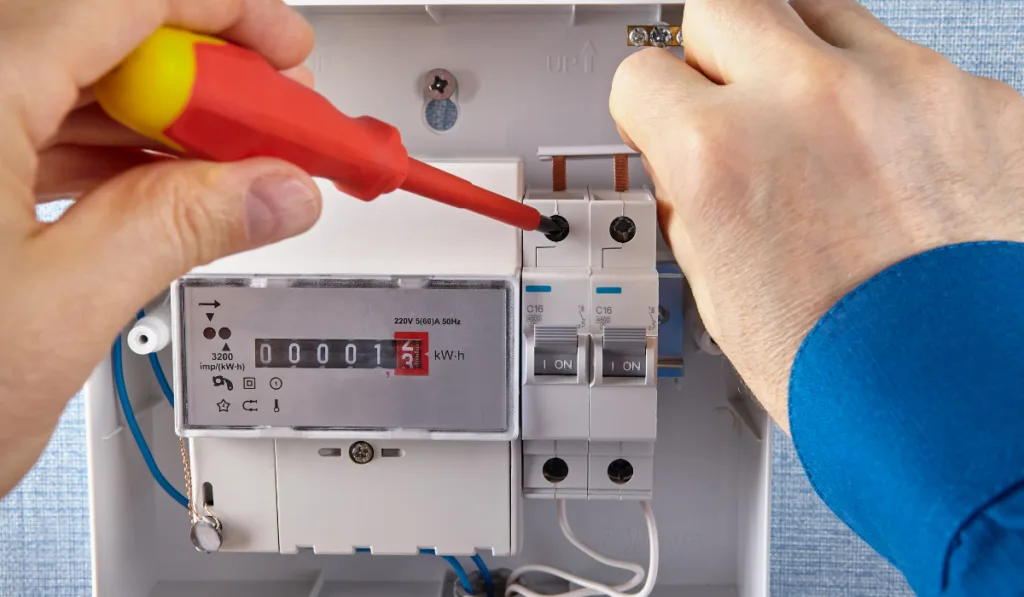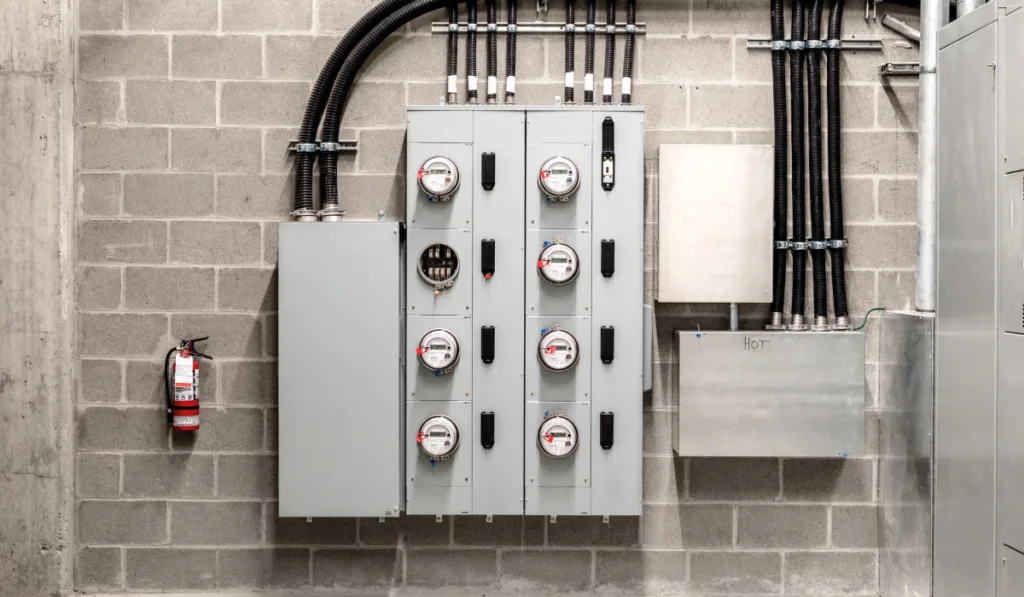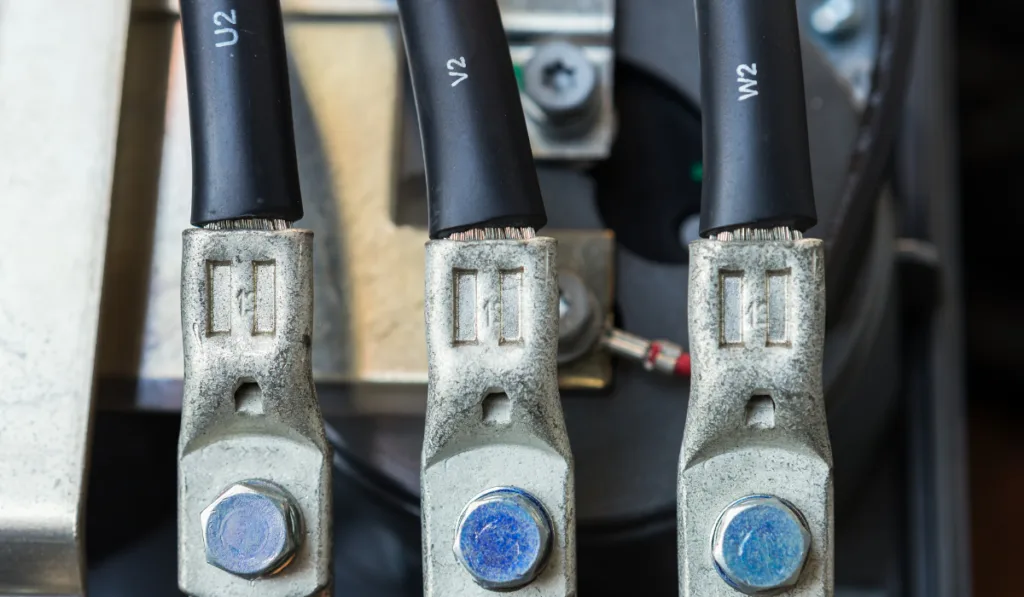*This post may have affiliate links, which means I may receive commissions if you choose to purchase through links I provide (at no extra cost to you). As an Amazon Associate, I earn from qualifying purchases. Please read my disclaimer for additional details.
It may be confusing to many people as they look at electrical equipment to see the specifications call for 208-volt service instead of the expected 240 volts. We are all familiar with standard home electrical labeled as 120 volts. Some household equipment may call for 240 volts. When many of us see a specification for 208 volts, it gets confusing.

What is the difference between 208-volt and 240-volt? 240-volt is single-phase power, while 208-volt is 3-phase power. Phase refers to the method of delivery of the power load.
- 3 phase requires 3 wires
- 3 phase is more efficient to deliver
- 3 phase delivers a more consistent power supply
Trying to make a single-phase tool or appliance work in a three-phase system can be a shocking experience, literally! Before you begin adding wires, motors, or heavy appliances to your electrical system, you need to understand the fundamental differences in single-phase and three-phase. Don’t risk damaging your home, shop, or yourself. Read on to learn what you need to know to do the job safely.
Table of Contents
Single-Phase vs. Three-Phase Power
Your home electrical service in the United States is almost surely 120-volts alternating current single-phase power. Single-phase power is delivered through one wire and a neutral wire. You may recognize these as the black and white wires that you find in the electrical box if you replace a light fixture or repair a wall switch. This is the defacto standard in the United States
Three-phase electrical service is also used in the United States in several ways. The most predominant use is the long-distance transmission of very large voltages. The transmission of three-phase power is more efficient because the load is spread over three wires. Systems that transmit large voltages across long distances can use smaller wire than a two-wire single-phase system.
Single-Phase Applications
In most municipal electrical systems, power is delivered to the area where it is to be used via a three-phase distribution network. A transformer is then used to convert the three-phase power into single-phase power suitable for delivery to the home. You will recognize the large pot transformers that hang on the utility poles or the squat secure boxes located near your home.

Single-phase power has some distinct characteristics.
- The AC voltage peaks occur at 90 degrees and 270 degrees
- A complete AC single-phase cycle occurs every 360 degrees
- Delivery of single-phase 120-volt service is accomplished using one hot wire and one neutral wire
- The cycle of the delivery occurs about 60 times per second
Because it only takes two wires to deliver 120-volt single-phase power, it is more economical in a residential setting. 120-volt 60 cycle AC electricity is the standard in the United States and almost every appliance, light bulb, or tool that you buy is designed to use this standard.
On the other hand, using single-phase power does have its disadvantages.
- Power delivery is inconsistent as the alternating current goes to zero once each cycle.
- The zero points each cycle require extra electronics to compensate for this constant variation in power delivery to protect complex electronic circuits.
- Single-phase motors in appliances tend to wear out faster due to this constant fluctuation in voltage during each cycle.
What about 240 volts?
Some appliances in the home and some tools in a shop may require 240-volt service. This is still a single-phase service. 240-volt service is accomplished by using two “hot” 120-volt lines. This doubles the available voltage to 240-volts. Most electric cookstoves, hot water heaters, and some other home appliances require this extra voltage.
There are some advantages to using 240-volt single-phase power.
- You can double the power available to a device without the need to increase wire size in most cases.
- Typically, appliances with large power needs such as stoves, heating units, air-conditioning equipment, and hot water heaters are designed for 240-volt operation because the cost of getting the same performance from 120 volts pushes the price of the equipment higher.
- Transformers in the home are not required since most homes in the US are supplied with two 120-volt service lines, which can be combined to create 240 volts.

Three-Phase Applications
Where higher loads and more power is required, three-phase power service comes into its own. Most commercial electrical installations are served by three-phase power. Businesses that operate large electrical equipment benefit from the ability to get more power through smaller gauge electrical wire. However, savings in wiring costs are not the only benefit of a three-phase electrical service.
- More power can be delivered with a three-phase system through smaller wires that would be needed to accommodate the same load in a single-phase system.
- More efficiency is realized in a three-phase electrical system. Motors tend to run cooler and last longer in a three-phase system.
- Much higher power loads can be accommodated in a three-phase system that is possible with a single-phase system.
One additional benefit of using three-phase over single-phase systems is often overlooked. Large data centers in the US are huge consumers of electricity. Single-phase power systems require heavier wiring to deliver the same amount of power as three-phase systems. However, the real savings come to the quality of the power delivered to costly electronic components.
Unlike single-phase power that has a trough in each cycle when the voltage is zero, three-phase power delivers power in three streams, or phases timed 120 degrees apart. At no time during the delivery cycle does the power drop to zero. This equates to a smoother power flow to electronic components.

It is this 120-degree separation of the three phases that results in the 208 volts that is delivered across any two legs of a three-phase electrical system. While this is close to 240 volts, by and large, equipment rated to run on 240 volts will not perform well and may even be damaged if run at 208-volts.
Conversely, plugging a 208-volt three-phase piece of equipment into a 240-volt single-phase system may have a disastrous outcome to you and the delivery system. You should consult a qualified electrician before installing any new equipment into your electrical system to be sure that the two are compatible.
Typically, three-phase power delivery systems are installed wherever the expected loads will be over 1000 watts. Since this occurs mostly in commercial or industrial districts, many residential areas don’t have three-phase power available. This can be a problem for some homeowners who have hobby shops and want to run some power tools, especially welders.
So, which is Better?
The easy answer is it depends. Single-phase power is a better option:
- For residential applications where you are using standard appliances and tools.
- Situations that call for loads less than 1000 watts on a continuing basis.
Three-phase power should be an option when:
- Expected loads will be over 1000 watts
- Heavier equipment and higher horsepower motors are required
- A wider variety of applicable voltages may be needed for various types of equipment.

Beware of the following
- Before attempting any alterations or addition to your electrical service, please consult with a qualified electrician. Electricity is a wonderful thing, but it can also be dangerous.
- Make sure any equipment you purchase is suitable for the type of electrical service. Never try to run three-phase equipment in a single-phase system. Without special knowledge, changing single-phase equipment to run in a three-phase system can damage not only the equipment but the three-phase delivery system as well.
- Follow all the manufacturer’s guidelines and safety precautions when using any electrical equipment or tools, no matter which type of system you are using.
Before you Plug-In
This short explanation of the differences, benefits, and downsides of each type of electrical system is just an introduction. I hope it gives you a better understanding of the types of delivery systems and why 208-volts and 240-volts are different. Before you plug-in, make sure that your appliance or tool is compatible with the voltage and type of delivery system you are using.
Resources
Here are some resources we used to put this article together for you.
- Fluke https://www.fluke.com/en-us/learn/blog/power-quality/single-phase-vs-three-phase-power
- OEM Panels http://www.oempanels.com/what-does-single-and-three-phase-power-mean
- Aegis Power Systems, Inc http://aegispower.com/index.php/blog/179-what-s-the-difference-between-single-phase-and-three-phase-ac-power-supplies
- Sciencing https://sciencing.com/info-8679920-difference-three-phase-electrical-wiring.html
- DataCenter Knowledge https://www.datacenterknowledge.com/sponsored/know-difference-between-three-phase-and-single-phase-power

Gerry
Wednesday 17th of November 2021
Hello, According to the nameplate, my electric stove consumes 7.3 amps at 208 volts which I think equals 1,518 watts. At 240 volts it consumes 9.8 amps which I believe equals 2,352 watts. 1518/2353 = 65%. Does that mean a 208 volt appliance only works 65% as well as a 240. Considering the breaker requirements and that a burner consumes about 1500 watts how do they come up with these low numbers.